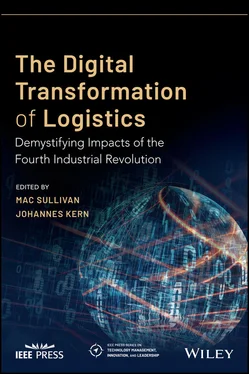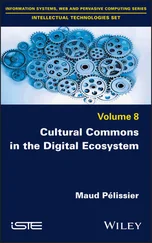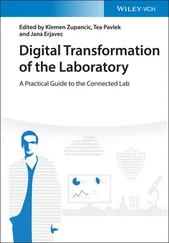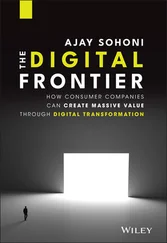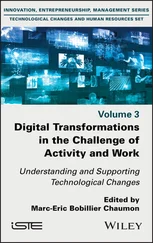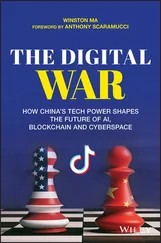That some of the advantages and bottlenecks outlined above are contradicting is partly caused by the different technologies and materials that are used under the umbrella of AM. This will be discussed in the next section.
Technologies and Materials
Various technologies and materials are discussed in the context of AM. This section will introduce them, stating their advantages and disadvantages.
While the first commercial AM printers that were developed as early as 1986 relied on stereolithography (SLA) technology, where light exposure hardens a photopolymeric resin, over time, more technologies emerged so that now seven different categories of AM technologies can be distinguished 7 (Silva et al. 1999; Wohlers 2012; Ngo et al. 2018). The three most popular ones – SLA, fused deposition modeling (FDM), and selective laser sintering (SLS) – will be subsequently described.
During an SLA manufacturing process, a concentrated beam of ultraviolet (UV) light or a laser is focused onto the surface of a container filled with a liquid photopolymer. The beam is focused and creates each layer of the target product through cross‐linking or degrading of the polymer (Dassault Systèmes 2020). Advantages of this technique are high accuracy, a smooth surface finish, and a range of functional applications. However, the resulting product is sensitive to long exposure to UV light. It is most suitable for functional prototyping, patterns, molds, and tooling, dental applications, jewelry prototyping and casting, and model making (Formlabs 2020b). In FDM , a continuous filament of a thermoplastic material is used as base material. The filament is fed from a coil, through a moving heated printer extruder head. The molten material is forced out of the extruder's nozzle and deposited onto a platform. Once the first layer is completed, the extruder and the platform are parted away in one step, and the second layer can then be directly deposited onto the growing item. A variety of materials can be processed. Most popular are thermoplastics, but also paste‐like materials such as ceramics, concrete, and chocolate can be used (Dassault Systèmes 2020). Advantages of FDM is its speed and that there are low‐cost consumer machines and materials available. However, its drawbacks are low accuracy, low level of details, and limited design compatibility. Therefore, it is most suitable for low‐cost rapid prototyping and basic proof‐of‐concept models (Formlabs 2020b). For SLS , lasers are used to sinter powdered material layer by layer to create a solid structure. The final product, rendered enveloped in loose powder, is then cleaned with brushes and pressurized air. The main materials used in the SLS AM process include polyamide, alumide, and rubber‐like materials (Dassault Systèmes 2020). The technology's advantages are design freedoms and that there is no need for support structures. However, there are issues regarding rough surface finishes and limited material options. It is therefore best applied in functional prototyping and for short‐run, bridge, or custom manufacturing (Formlabs 2020b). These technologies are compared in Table 4.1.
Due to the fast development in AM technologies, an increasingly diverse range of materials from chocolate to advanced multifunctional materials can be used (Petrick and Simpson 2013). Most common are polymers, such as thermoplastic polymers (e.g. polyamide, polycarbonate) and thermosetting powders (e.g. polystyrene or photopolymer resins), which have been developed for aerospace, automotive, sports, medical, architectural, and toy industries (Ngo et al. 2018). Benefits of using polymers and composites are that they allow for fast prototyping, are cost‐effective, and permit complex structures as well as mass customization. However, challenges are weak mechanical properties, a limited selection of polymers and reinforcements, and anisotropic mechanical properties 8 (especially in fiber‐reinforced composites) (Ngo et al. 2018). Using metals and alloys in AM, preferably titanium, nickel, and iron alloys (particularly stainless steels), is especially interesting for the aerospace, medical, and dental industries (Fisher 2020). Benefits of metals and alloys are the possibilities for multifunctional optimization, mass customization, reduced material waste, fewer assembly components, and the possibility to repair damaged or worn metal parts. Meanwhile, there is only a limited selection of alloys available, there are dimensional inaccuracies, and the surface finish is poor. Furthermore, post‐processing such as machining, heat treatment, or chemical etching might also be required (Ngo et al. 2018). In comparison with these metals and polymers, ceramics are difficult to process, particularly for complex shapes as they cannot be cast or machined easily (Eckel et al. 2016). Advantages of ceramics are that the porosity of lattices can be controlled and that complex structures and scaffolds for human body organs can be printed. Also, reduced fabrication time is needed, and composition and microstructure can be better controlled. Challenges are that there is a limited selection of 3D‐printable ceramics, dimensional inaccuracies, and poor surface finish and that post‐processing such as sintering might be required (Ngo et al. 2018). These materials are compared in Table 4.2.
For the AM process, the raw material must be formed into a compatible state such as powder, sheet, wire, or liquid. For the most stringent service applications, AM parts are usually post‐processed to improve the microstructure, to reduce porosity, and to finish surfaces (Bourell et al. 2017). Currently, there are still material‐related hurdles in AM, such as high costs of materials, poor material characteristics, variable quality across shipments due to a lack of standardization, and a limited variety of available materials (Casalino et al. 2015; Joshi and Sheikh 2015; Lewandowski and Seifi 2016; Hitzler et al. 2017a, b). However, these barriers could be overcome, and the share of printable materials be increased in the future. A substitution of original materials must be taken into account, which potentially leads to inclines in costs and varying mechanical properties. Also, the printability of some materials could be already demonstrated in a research environment, but they are not yet available for industrial usage (Kretzschmar et al. 2018).
Table 4.1 Comparison of AM technologies.
Source : Based on Dassault Systèmes (2020), Formlabs (2020b), and Varotsis (2020a, b, c). © John Wiley & Sons.
|
Stereolithography (SLA) |
Fused deposition modeling (FDM) |
Selective laser sintering (SLS) |
| Type |
Vat polymerization |
Material extrusion |
Powder bed fusion |
| Advantages |
Very high dimensional accuracy/intricate detailsVery smooth surface finishSpecialty materials available (e.g. clear, flexible, castable resins) |
Cost‐effective way of producing custom thermoplastic parts/prototypes; low‐cost consumer machines and materials availableHigh production speedWide range of thermoplastic materials available |
Good, isotropic mechanical propertiesNo support required (designs with complex geometries can be easily produced)Excellent manufacturing capabilities for small to medium batch production |
| Disadvantages |
Brittle (not suitable for functional prototypes)Mechanical properties/visual appearance degrades with long exposure to UV lightSupport structures always required; post‐processing needed to remove visual marks |
Low dimensional accuracy and resolution (not suitable for parts with intricate details)Likely to have visible layer lines, requires post‐processing for smooth finishAnisotropic (directionally dependent)Low accuracy, low level of details |
Grainy surface finish, internal porosity (may require post‐processing, if smooth surface or water tightness needed)Cannot print large flat surfaces and small holes accurately |
| Applications |
Functional prototyping, patterns, molds, and tooling, dental applications, jewelry prototyping and casting, and model making |
Low‐cost rapid prototyping, basic proof‐of‐concept models |
Functional prototyping, short‐run, bridge, or custom manufacturing |
Table 4.2 Comparison of main materials used in AM.
Читать дальше
